Emerging models in translation workflow and new roles for translators [CD-ROM]
Tipo de material: Recurso continuoDetalles de publicación: Buenos Aires : Colegio de Traductores Públicos de la Ciudad de Buenos AiresCTPCBA , 2011Descripción: p. 203-213ISBN:
Recurso continuoDetalles de publicación: Buenos Aires : Colegio de Traductores Públicos de la Ciudad de Buenos AiresCTPCBA , 2011Descripción: p. 203-213ISBN: - 978-987-1763-02-3
| Tipo de ítem | Biblioteca actual | Colección | Signatura topográfica | Estado | Notas | Fecha de vencimiento | Código de barras | |
|---|---|---|---|---|---|---|---|---|
 Artículos/Analíticas
Artículos/Analíticas
|
Biblioteca Bartolomé Mitre | Colección General | 061.3 : 81'25 CTPCBA 2011 (Navegar estantería(Abre debajo)) | Disponible | tomo 2; part. 2 | 3387-064 |
Navegando Biblioteca Bartolomé Mitre estanterías, Colección: Colección General Cerrar el navegador de estanterías (Oculta el navegador de estanterías)
| 061.3 : 81'25 CTPCBA 2011 Una gratificante carrera contra el reloj | 061.3 : 81'25 CTPCBA 2011 Traducir para las organizaciones internacionales las Naciones Unidas | 061.3 : 81'25 CTPCBA 2011 La exportación de servicios de traducción al español | 061.3 : 81'25 CTPCBA 2011 Emerging models in translation workflow and new roles for translators | 061.3 : 81'25 CTPCBA 2011 Mitre, traductor del Dante | 061.3 : 81'25 CTPCBA 2011 A busca de equivalentes para os neologismos lacanianos | 061.3 : 81'25 CTPCBA 2011 Normas para los prestatarios del servicio de traducción la calidad se puede medir desde hace mucho tiempo |
incl. ref.
This talk examines the emergence of two new models in translation workflow, as instigated by advances in machine translation, on one hand, and the application of crowdsourcing in translation, on the other. For the past two and a half decades, the typical translation workflow in companies producing multilingual content and LSPs has revolved around an off-the shelf or customised translation memory system with terminology management facilities, proprietary lexical resources, and a team of selected translation professionals, usually translators, reviewers and project managers, who could access the system and the centralized resources. Remote access to the system and resources has encouraged collaboration among bigger teams of translators working on larger projects and helped ensure consistency, hence quality, among translations. However, even the best equipped and best executed workflows of this type have failed at times to meet particular translation demands, or delivered a satisfactory service after having compromised one or more service quality factors. The difficulties faced currently result mainly from the exponential growth of content that needs to be translated, the shortage of good translators, especially in minority languages, and the cuts in translation/localisation budgets. In order to address these challenges new approaches to translation production had to be invented.
No hay comentarios en este titulo.

